The following examples illustrate possible uses of positional and aggregation qualifiers for data variable names in FP Standard format. FP Standard documentation for Variable Qualifiers are found in Section 3 of Data Variables.
Learn about AmeriFlux FP-In format for uploading BASE-In* at Uploading Half-Hourly / Hourly Data.
* BASE-In = half-hourly / hourly flux-met data submitted to AmeriFlux
First, a few reminders about constructing a variable name:

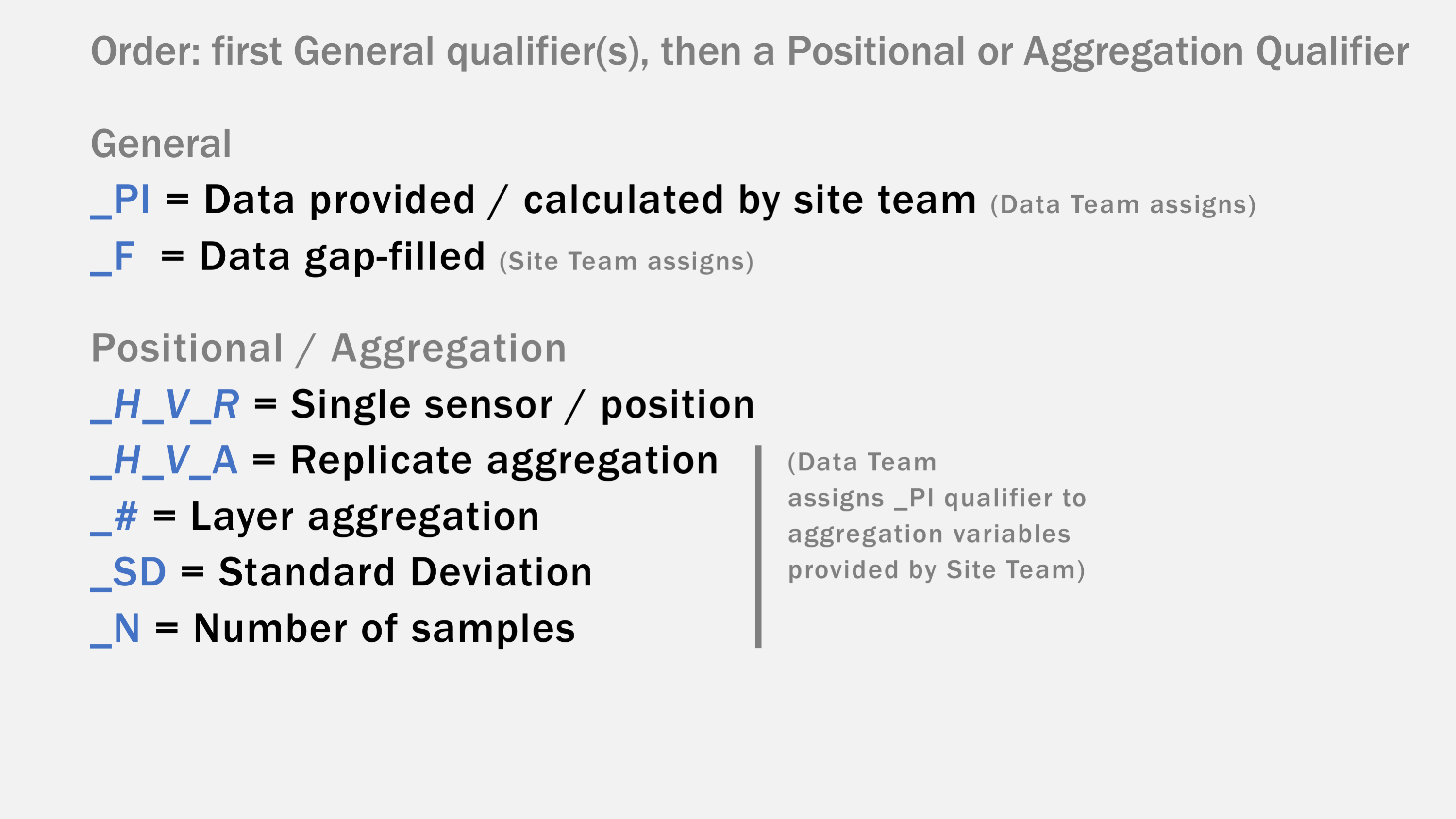
The image below is a tower with sonic anemometer, gas analyzer, and a profile of temperature sensors.

Positional qualifiers represent the relative horizontal (H) and vertical (V) physical locations of an observation (this may or may not be the location of the sensor), as well as the replicate number (R). Submitted variable base name without qualifiers are assumed to have the positional qualifier _1_1_1.
Note: Height is recorded as the distance from the base of the tower to the observation location.
CO2 = Carbon dioxide concentration, FC = CO2 flux, WS = wind speed
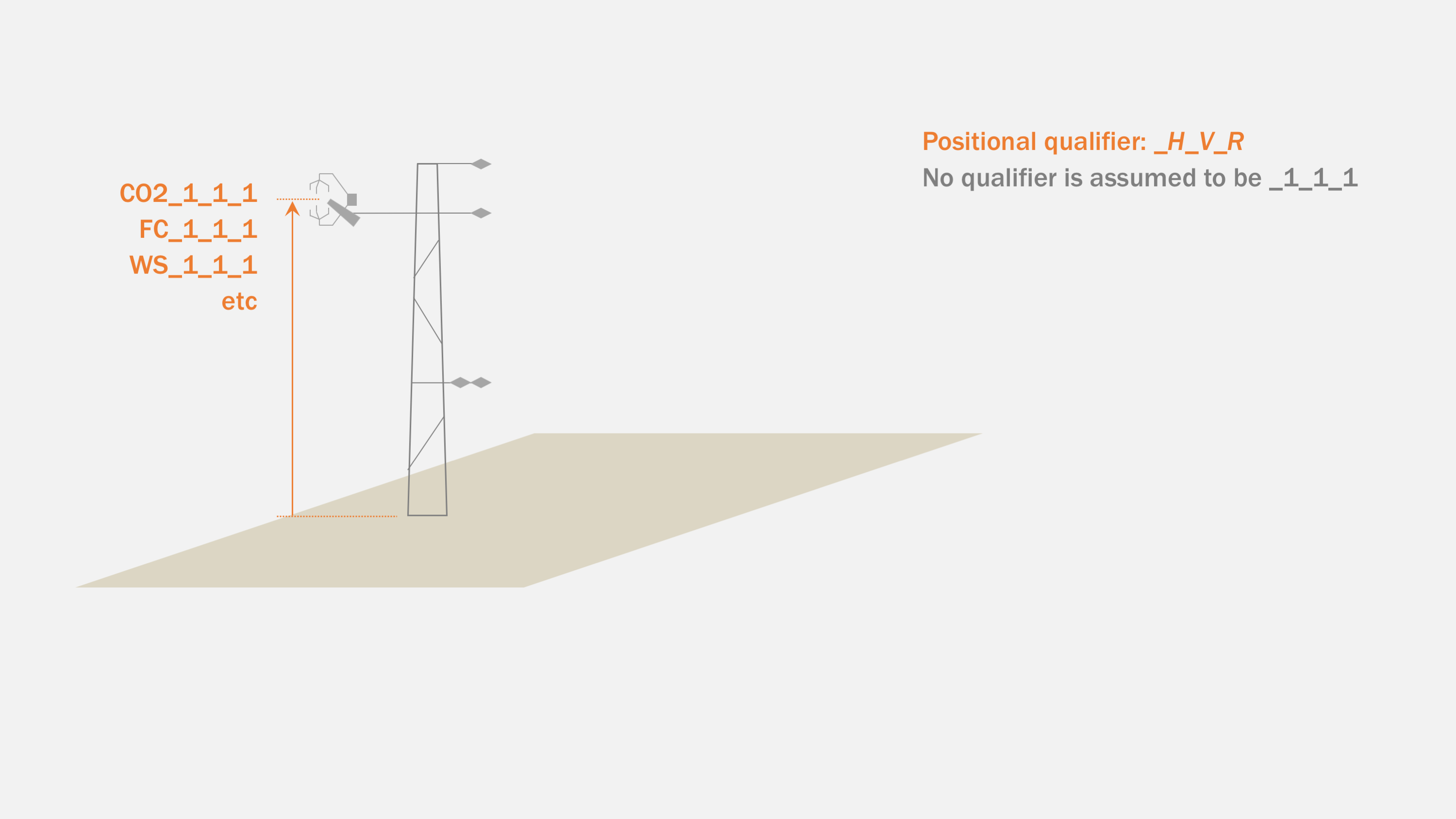
The image below is an example of a vertical profile using air temperature (TA). Replicate measurements occur in the lowest position. Vertical indices are numbered from top to bottom.
Positional qualifiers (_H_V_R) are generally expected to remain the same at a site. If adding a new sensor to a profile, AmeriFlux sites should not reassign positional qualifiers without discussing with the AmeriFlux Data Team (ameriflux-support@lbl.gov).

Observations at a new horizontal position reset the vertical and replicate indices. In this example, new horizontal location TA_2_1_1 has vertical index V = 1. It has no relation to the vertical indices of the tower profile.

Replicate aggregation can be the average of replicate observations (by the site team or by the network Data Team) or a primary observation with replicate observations used for poor quality or missing data.
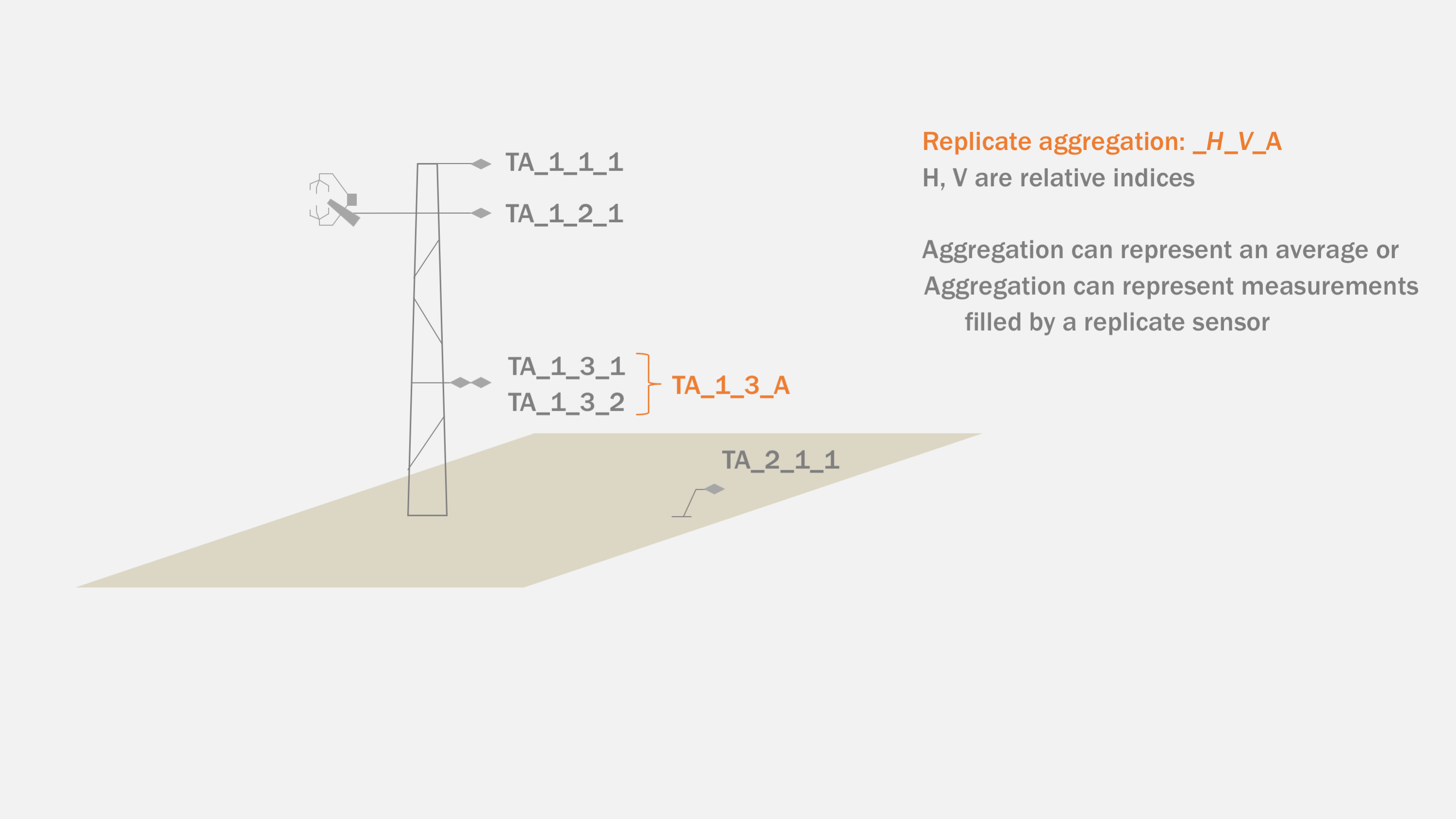
The image below are vertical profile examples using soil temperature (TS).
Note: Depths are denoted as negative distances.
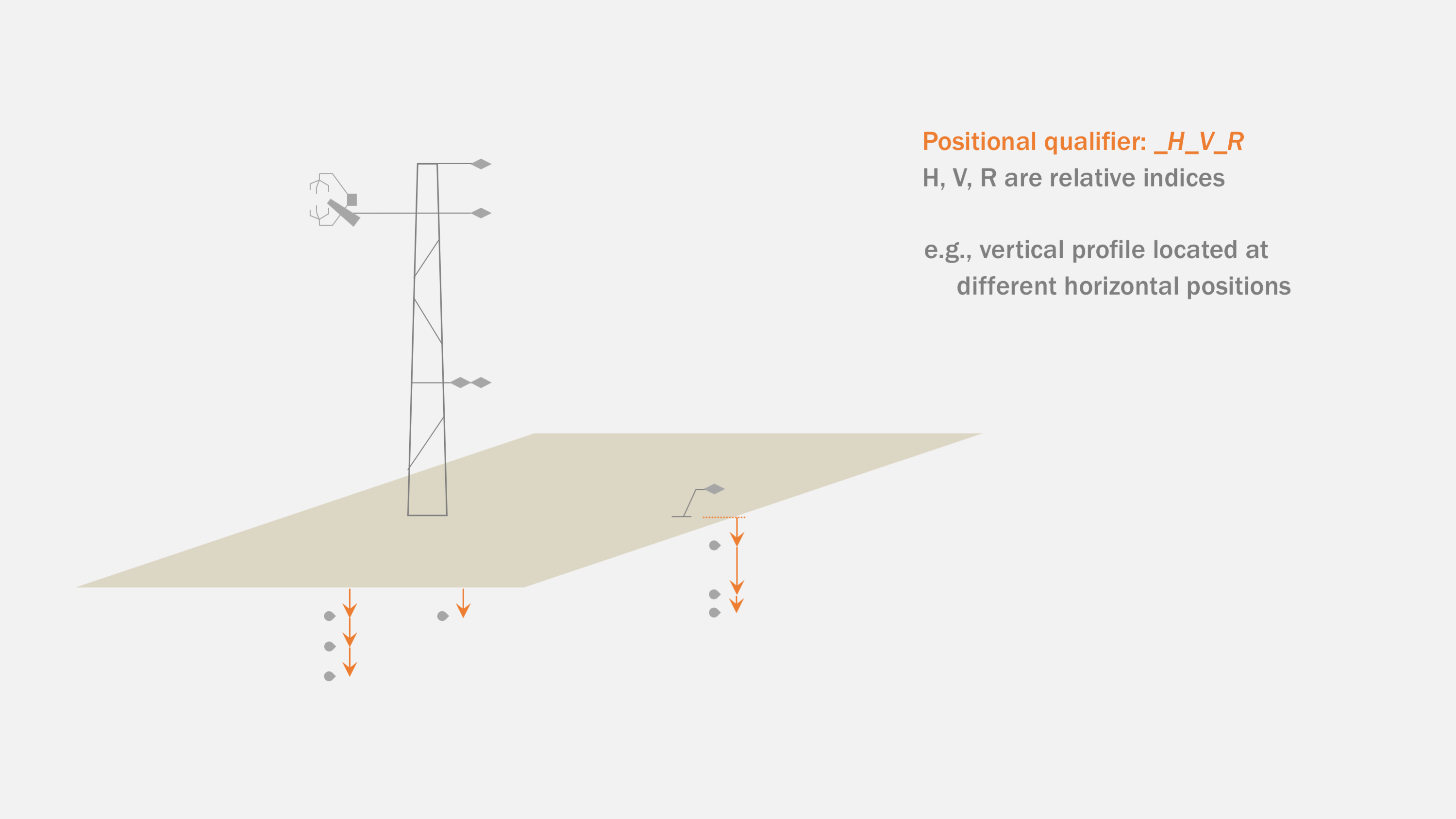
Positional qualifiers are independent of variable base names. The air temperature horizontal index (H = 2) can be different than the soil temperature horizontal index (H = 1), as in the image below, even though the observations are in the same vertical profile.
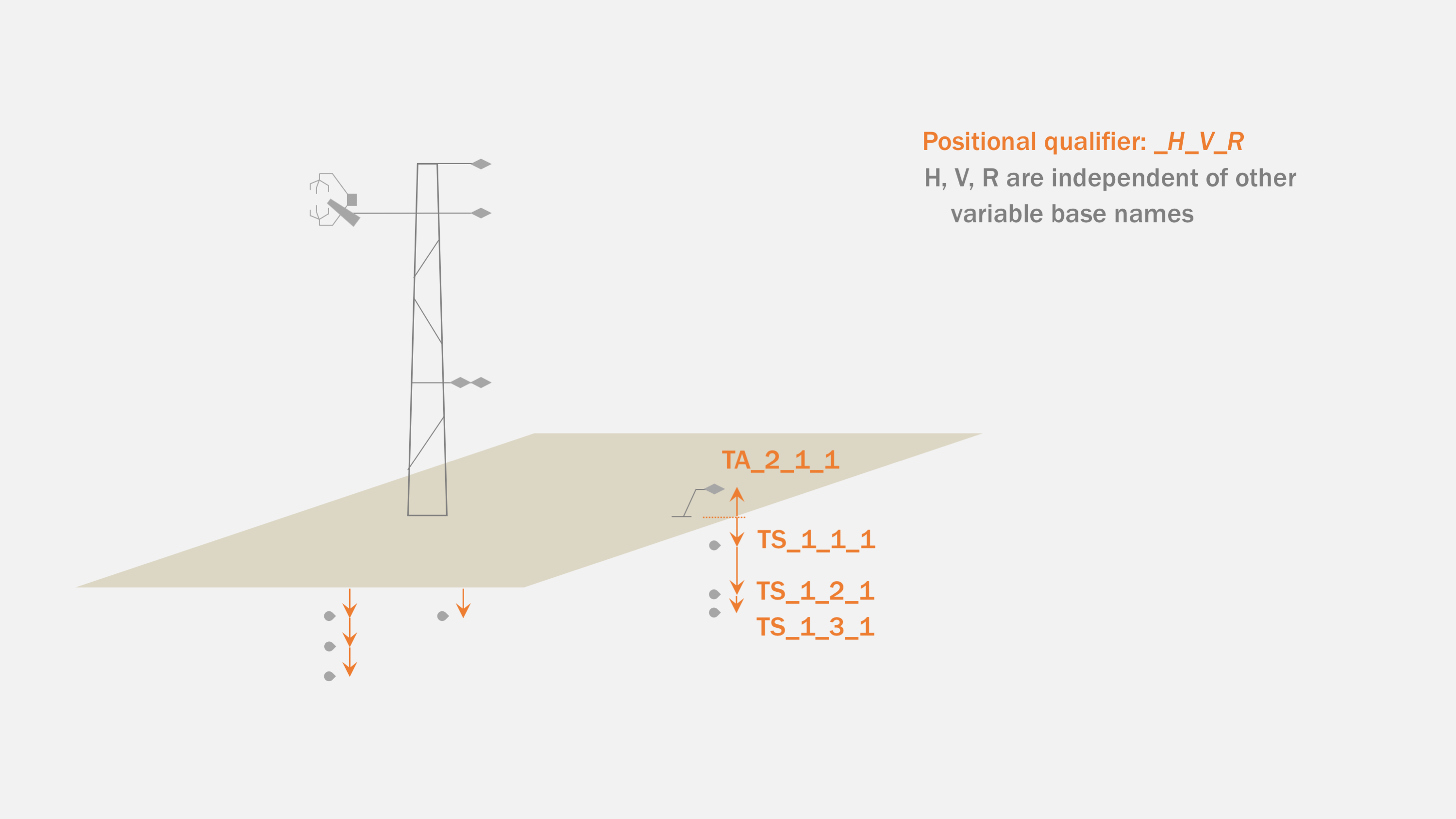
The vertical and replicate indices are independent of the other profiles (horizontal indices). This means that variables with the same vertical indices may be at different depths (or heights). In this example, TS_1_2_1 is at a lower depth than TS_3_2_1 even though they have the same vertical index (V = 2).
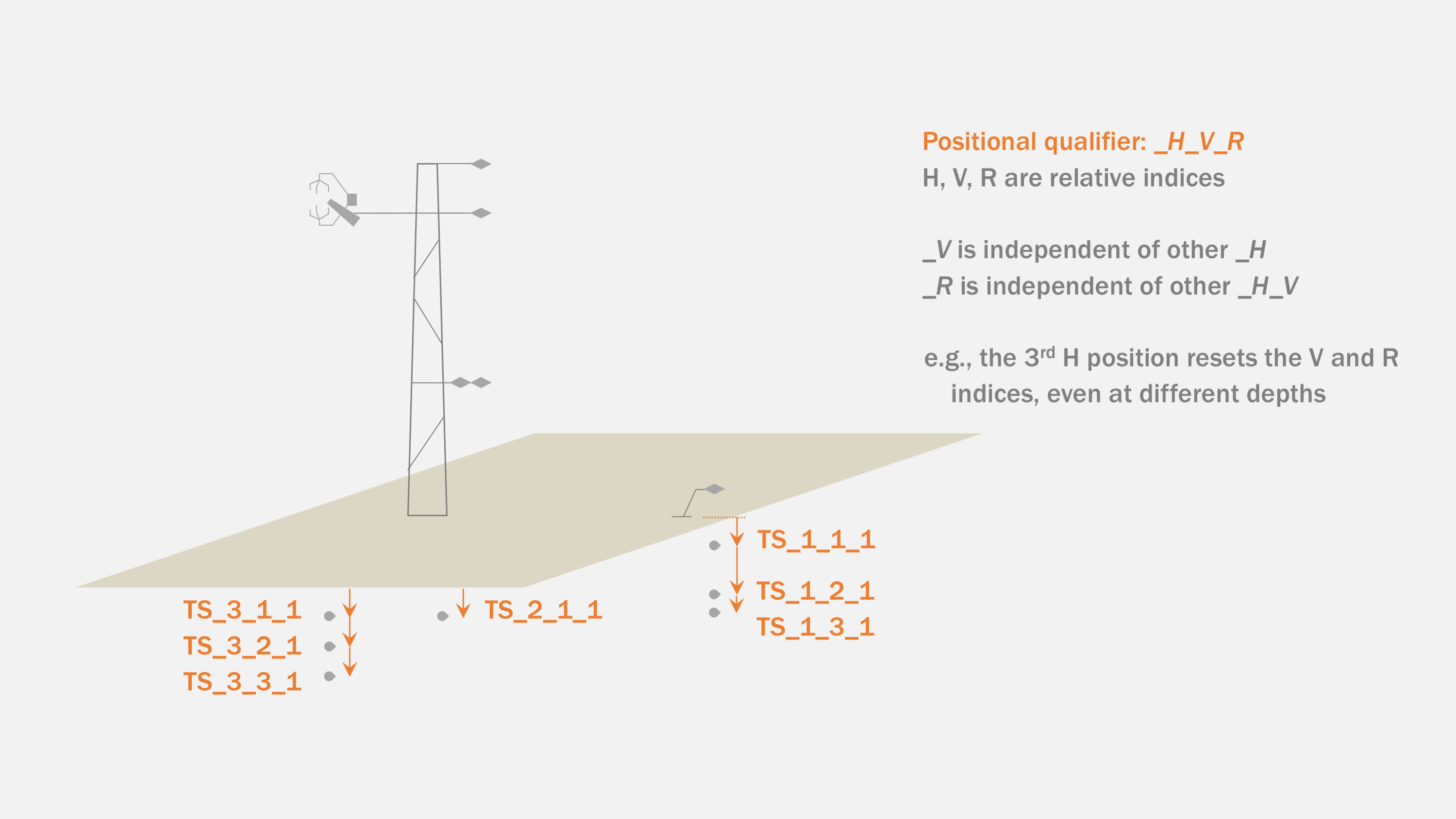
Layer aggregation can be the average of sensors within a horizontal layer or a primary observation with secondary observations within the layer used for poor quality or missing data.
Horizontal layers can be of any thickness. Observations can be at different heights / depths within the layer. A series of horizontal layers can have a different number of observations in each layer.
In this example:
- TS_1 = TS_1_1_1, TS_2_1_1, TS_3_1_1
- TS_2 = TS_1_2_1, TS_1_3_1, TS_3_2_1, TS_3_3_1
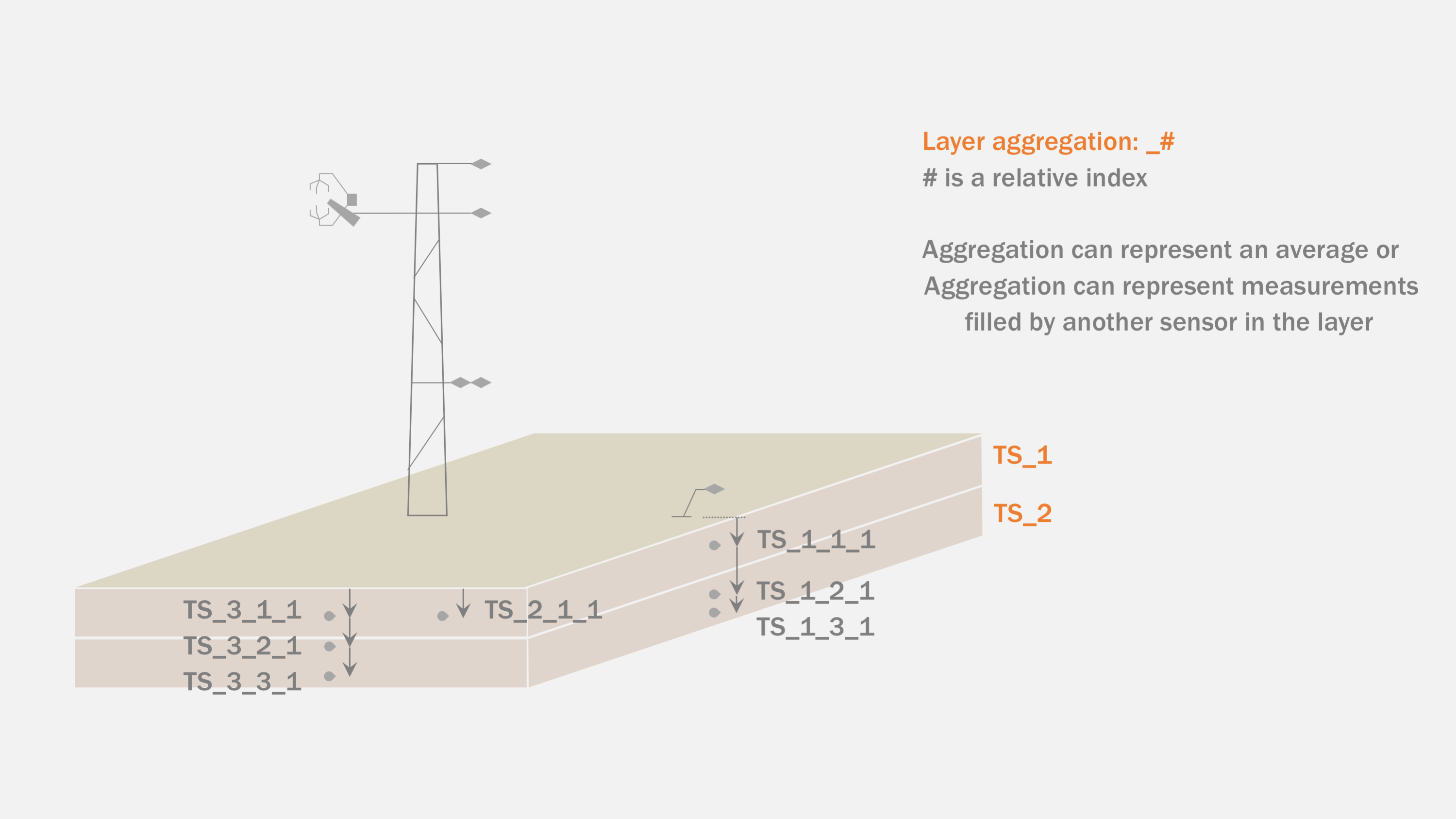
When possible, individual observation locations (_H_V_R) should be provided in addition to aggregate variables.
Details for data formats are as follows:
FP Standard: Data Variables
FP-In (format for submitting BASE-In* to AmeriFlux): Half-Hourly / Hourly Data Upload Format
* BASE-In = half-hourly / hourly flux-met data submitted to AmeriFlux
Please contact ameriflux-support@lbl.gov with any questions.

